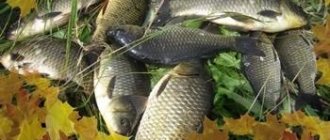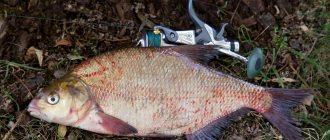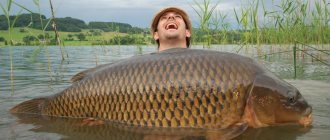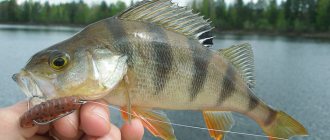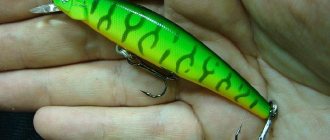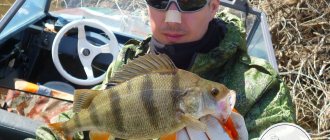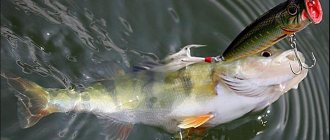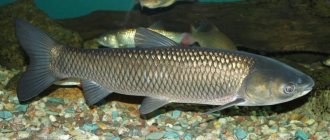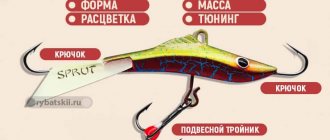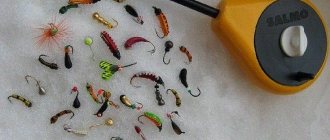Spinning fishing
February 16
Review of spinning fishing and choosing a fishing spot in November
Anglers with extensive fishing experience know that November fishing is very profitable compared to other months of the year. They fish in different ways, in different places and use different spinning rods.
November fishing can be characterized by different periods:
1. Before ice forms on the reservoir.
2. During the freeze-up period.
3. First ice.
In different parts of Russia, these periods occur at different times, and in some places freeze-up begins in December.
1. Fishing until ice forms on the pond. Usually this is the first days of November or the first week. The weather is snowy, rainy in some regions, and the first frosts in some places. In such weather it is excellent to fish with a spinning rod, you can use float rods. At this time, perch and roach are good for biting; bloodworms or fry are used as bait.
2. Ice period. When a small ice crust forms on the surface of the water, anglers notice an excellent bite. The weather on the reservoirs is calm, the reservoirs themselves are calm during this period, especially good places for fishing on ponds, lakes, or dams of large reservoirs.
3. Fishing during the first ice. During this period, fishermen use all possible gear, since the period will be marked by fishing for different species and you can fish with anything. To catch pike perch, pike perch, or most often pike, use large winter lures, jigs with bloodworms. If you use a float spinning rod, you can catch minnows, chubs, and bream. When fishing with live bait, it is excellent to use crucian carp or ruffe bait; you can catch a good-quality pike. Burbot can be caught at night. When using wiring with a spinning rod, it is better to find a place where it is not very deep and there is no current.
November fishing is very diverse, and allows the angler to use all his gear, both summer and winter.
Fishing places in November include a wide variety of geography of reservoirs and their locations. You can fish everywhere. Fishermen often choose large bodies of water, since at low temperatures the heat capacity of the water remains for a long time, and in such places there are a lot of predatory, large fish, especially a lot of perch, pike perch and pike. The fish react quickly to the bait, so everyone leaves with a big catch.
In November, pike choose certain habitats; these can be deep holes that are located far from the shore; locations of snags and plants; places of confluence of reservoirs, branches of river channels; depth changes. At the beginning of November, pike are better caught in small and not deep reservoirs, then in mid-November it is better to choose a medium-depth reservoir, and at the end of November these are large reservoirs. With a depth of more than 7 meters.
Pike feed in winter in holes at great depths, so if you find a pike in one place, then next time you will need to fish in the same place.
Features of fishing in November
At this time of year it becomes quite difficult to catch a predator. Constantly changing weather conditions affect it. Although, compared to other types of fish, perch is not too sensitive to sudden changes in pressure and wind changes.
You can go fishing in windy, light rain and sunny weather. The month determines the behavior of the perch. It becomes unstable. The fish feeds at a certain time and can travel throughout the entire reservoir.
The characteristics of water that becomes crystal clear also disturb humans. The predator has good eyesight and is able to notice the fisherman. The humpback is diurnal, and fishing occurs from early morning until evening.
Large trophy perch are caught in the early morning, and during the day small fish up to 250 grams bite on the bait.
Features of November fishing
- Makes it easier to find large predators. Such fish are usually found in holes and, knowing their location, finding them will not be a hassle.
- Many fishermen successfully use echo sounders during the cold season. This device in November is good because the lethargy of the fish, and sometimes just standing in the hole, allows you to very accurately identify them.
- We should not forget that in November the water can be almost completely transparent and allows the fish to see their hunter even on the shore.
- Uneven wiring is more suitable for this period.
- Fishing in late autumn in southern latitudes is always significantly different from fishing in the same period in northern reservoirs.
Where to look for a predator
In late autumn, the striper tries to stay near snags, bridge supports, in deep edges and not far from the dam.
If the weather is warm and sunny, try checking the summer areas favored by fish. The predator is looking for young white fish, and it feeds in its usual places. Even in November, with good weather, you need to pay attention to small areas of the reservoir.
Still, most of the time the perch is deep and you can determine its location in the shallows with several casts.
Remember, when the temperature drops below plus 10 degrees, you need to change gear. Those that bring results in early autumn already stop working. Even a natural worm is no longer attractive, but is replaced by artificial ones.
Similar attachments are suitable - passive or vibrating.
Expert opinion
Valery Andreevich Sizov
Professional fisherman with 35 years of experience
It is better to fish on a large body of water using a boat. An echo sounder will make it much easier to find a predator and increase the chances of a big catch.
Promising places for perch fishing in November
You can always find a school of active perch in late autumn near snags, near dams, on deep edges, and also near bridge supports. Provided the weather is good, you can catch perch in areas where they were found in the summer and early autumn. Perch always sticks to areas where juvenile white fish are concentrated, which, even in November, continue to feed in familiar and food-rich places. Where is there a lot of it? Only where in the summer they caught bream, carp, crucian carp using floats and other gear. Small areas of the reservoir should not be left without attention even in November, but only if the weather has been good, clear and warm for several days. Schools of white fish fry will definitely swim to the coastal zone to bask in the warm water, followed by perch. However, it is important to remember that in the fall the atmospheric pressure increases and the perch spends more time at depth, so it is enough to make a few casts to understand whether or not there is a predator in the shallows.
Spinning fishing
With the arrival of cold weather, the predator gathers in flocks. That is why the bite in November can be the most successful. You should also try in the shallows, however, the best chance of catching a striped predator is at a depth of 3–5 m or emerging from a hole. The best place would be a section of deep-water channel that smoothly turns into a sandbank or areas near bridge supports.
How to equip a spinning rod
Lightweight spinning tackle is suitable. A completely sufficient test rod is from 2 to 21 grams. At the end of autumn there is no point in using leashes. This can alert the fish and interfere with the enticing movement of the bait.
For successful fishing, monofilament from 0.16 to 0.18 mm is suitable. During this period, wiring is carried out along the bottom. The fisherman’s task is to correctly determine the dynamics and pauses between broaches.
For active fish, the wiring should be at a higher speed and at intervals of 3–5 seconds; when the fish is sluggish, the speed is reduced and pauses are increased to 10 seconds.
Technique
Perch fishing in November involves several types of fishing. The most popular is the smooth one, carried out in the middle thickness of the water. It is most suitable for catching perch with a spoon. Another method is stepped wiring, which is used at great depths. It is suitable for fishing with a wobbler and twister.
Retrieving with stops - a modification of the first two - is used together with a jig. Its essence lies in pausing the bait for a few seconds.
When giving preference to wobblers, it is better to choose those models that are small in size. This significantly reduces the number of empty bites. You can use not only sinking, but also floating types of wobblers. When choosing the second option, the fisherman needs to know that the depth should be kept small. A popper is suitable if it becomes clear that this predatory fish has been attracted by a fry that stays in shallow water. However, this happens quite rarely, so catching perch in November with a popper is a rarity among anglers.
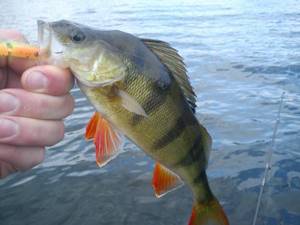
What does it bite on?
In the last month of autumn, various baits are used: medium-sized wobblers and spinners. Often a twister with a length not exceeding 5 cm is used. It is very convenient to fish with a lead or rubber with a small load.
Practice shows that vibrating tails and twisters bring the best results. The main thing is that after casting the bait does not come off the bottom by more than 5 cm. It’s even better when it slowly creeps into one.
This movement causes a reaction from the predator. Proper selection of bait, successful casting and retrieving is of great importance.
Oscillating spoon
Compared to a turntable, an oscillator produces low-frequency play. Therefore, it attracts medium-sized large-scale perch a little less well.
But for large fish at great depths it is the best option. Also, an oscillating spoon will allow you to make long casts. They are often caught with elongated spoons from 3 to 7 cm. A type that has received a special name - micro-oscillators - is also suitable.
Spinners with rotation
A truly universal bait is good in the water column at shallow depths, in shallow bodies of water such as ponds, lakes, and medium-sized rivers.
Perch responds well to high-frequency game, which can be easily ensured with uniform wiring. Mastering this method is quite simple. A serious disadvantage of the spinner is the lack of long-distance bait casting and the inability to fish at depth.
The exception is front-loaded turntables. When choosing a spinner for November, choose heavier models than for fishing throughout the year. After all, it will be necessary to fish at a decent distance and depth.
Wobblers
Let us immediately note that the effectiveness of the wobbler is inferior to other options. There are conditions when small baits from 2 to 5 cm give good results.
At the end of autumn, the perch is more at depth, so the use of small wobblers becomes impossible. However, in conditions up to 5 m, small samples - cranks, minnows and high-frequency fetas - are perfect.
Selection of autumn baits for perch
In autumn perch fishing, it is preferable to use small artificial baits. This is due to the fact that most often small humpback whales are caught. Captures of a predator weighing more than 1 kg are rare.
Shape and weight
Perch fishing in September is carried out using light rotating spinners from the French company Mepps, sizes No. 1 and No. 2. To be able to move the spinners deeper, choose larger Mepps, sizes No. 3 and No. 4.
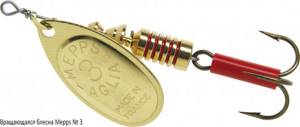
In the first half of autumn, fishing with a microjig with a jig head weighing 3-4 g is effective. The length of the twister and vibrating tail does not exceed 3-4 cm. The weight of the spinners ranges from 4 to 15 g, depending on the depth of their wiring. Their length varies between 3−6 cm.
At medium depths, the optimal weight of the jig head is from 8 to 10 g. The appropriate hook and bait are selected. To cast a drop shot or a retractable leash to great depths, use a load weighing up to 20 g. The bait should be small in size, independent of the load. Since the perch's mouth is small, it is better to use oscillating spoons and elongated wobblers.
Which color is more attractive?
At the beginning of autumn, perch fishing is most effective with silicone baits of the following colors:
- brown with silver splashes;
- bright green or light green;
- purple or pearlescent;
- snow-white with green and red splashes.
Fishing for perch in October is carried out at depth, so the color of the bait does not play a big role. You can use the same colors as above. Wobblers, rotating and oscillating spoons of light colors work better in cloudy weather. On a sunny day it is better to use baits of darker shades.
Fishing with a jig
When thinking about what perch bites on, you should use another method - microjig. It brings excellent results and provokes even sluggish, passive fish to attack.
The microjig differs from the usual one in the weight and size of the head. Its weight should correspond to the depth in the area intended for fishing. The most popular, weighing up to 7 g.
Having settled on light equipment, you need to take into account the performance of the spinning rod. Choose with dough not exceeding 10 grams and with a minimum of zero. Thanks to this, even light touches of the predator can be noticed and the strike can be carried out in time.
The only thing that is effective is jig options in familiar water areas, where you won’t find submerged stumps and snags.
Small, up to 5 cm, silicone worms, as well as vibrotails and twisters are used as bait. Edible silicone works best. When working at a decent depth, you can not pay attention to color.
If the water is clean and clear, give preference to natural colors: white, silver, yellow, light green and smoky. Lures in acidic and bright colors are suitable for muddy water.
Jig equipment
The jig head is selected for the conditions, taking into account the size of the bait. This option is classic. Articulated rigs work great for perch. She represents an offset hook with a Cheburashka sinker; a jig-rig is also suitable.
Jig-rig is similar to the classic version, but significantly changes the tactics. It is possible to cover a large field and animate floating silicone even at a minimum wiring speed.
Being almost in place, crayfish and similar animals reproduce perfectly. All you need is a slight twitch of the spinning rod.
In conditions of fast current or deep water, heavy heads and sinkers will be needed, but this hinders normal play. Thus, slow wiring will not be possible. In this case, you can use exploded snap-ins:
- A diverting leash is well suited for currents. A heavy sinker lies on the bottom, and a leash with bait and a hook at a distance from the load stands in the water column.
- The drop shot is good for vertical fishing. When hunting from piers, bridges, steep banks and from a boat. This method breaks off local deep places. The hook is located on the main line, above the sinker, about 50 cm or at a distance slightly less.
Good bait
You can catch perch in the fall using a variety of baits. However, they differ significantly from those solutions that were used in the summer or spring. For example, if in the summer a striped predator pecked excellently at a worm or a leech, then in the autumn it is advisable to replace them with live bait. But since access to fry in the fall is limited, fishermen have to choose artificial baits that accurately imitate the game of live prey.
When choosing a promising bait, pay attention to silicone products and foam rubber. If you apply the correct wiring, jig models will work very effectively, arousing special interest even among the most sedentary individuals. Experienced fishermen advise using fry of different shades, for example, brown or pearlescent. Dark green products are also famous for good results.
The length of the bait for perch jig plays a very important role. Experts say that the best size for autumn fishing is 5 centimeters. This is quite enough to interest a large specimen.
In addition to jig baits, fishermen also catch perch with spoons. One of the advantages of metal spinners is the ability to cast long distances with high accuracy. However, it is problematic to fish river places with intense currents with them, because the bait will not be able to reach the bottom, where, as a rule, the autumn predator is found. In such cases, the spoon can be replaced with a deep-sea wobbler.
Among the popular spinners that are used for autumn spinning fishing, it is necessary to highlight the castmaster.
When twitching perch in early autumn, it is advisable to use popular minnow class wobblers. Considering the abundance of aquatic vegetation, it is problematic to carry out a uniform retrieve at the beginning of autumn, so fishermen practice the jerking, twitching variety. Once the vegetation begins to die off, these lures are used to catch perch in shallow bays that are inaccessible in the summer due to the dense layer of vegetation.
Minnow wobblers 10-15 centimeters long have a slight depth. With their help, you can fish areas where there are no algae thickets, making casts into the so-called “windows”.
How to catch with live bait
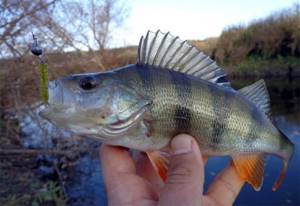
Some anglers prefer to fish for whitebait in the fall. However, such a choice only works in warm regions of the country. When stocking up on fry, they are caught with a float rod. They also use donka with live bait. On rare occasions there are mugs.
Often a pond is populated by a large number of humpback whales, then their fry can be turned into bait. After all, the predator bites well on the bait it knows.
This bait is used for float gear and for bottom gear. A float must have a good carrying capacity, otherwise the live bait will simply drown it. Taking into account the strength of the current and the depth, sinkers of 4 grams or more are used. Adjust the depth of the weight so that it is close to the bottom, next to the fry.
Catching perch in autumn with a float rod
September usually pleases with smooth and fairly warm daytime weather, but cold snaps at night lower the water temperature more and more noticeably. This affects the activity of carp and grass carp. Roaches and bream regularly bite, especially in rivers, but with further cold weather, most likely, the bite will become not only weak, but more cautious. Burbot activity is increasing, and we can expect bites from large catfish.
The choice for an angler is wide, but with the onset of Indian summer, I prefer to hunt for perch, not with a spinning rod, but with a float rod. Moreover, there are reservoirs in which perch now simply refuse spinning baits. I think this is due to the abundance of fry, the satiety of the predator and the skill of the spinner.
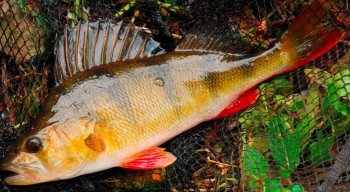
The possibilities of a float rod are much wider. Even in the most critical situation for a spinning angler, a floater using extremely thin equipment, point-to-point wiring techniques and natural baits has an undeniable advantage. But the last role can also be played by the effective use of bait that provokes perch.
Good perch fishing can be found in rivers and canals. Perch is a diurnal fish, despite the fact that there are many known cases when large perch in the reservoirs of the Moscow region pecked at late twilight. But for most fishermen it is more pleasant to spend several hours on a pond during daylight hours.
In any case, I consider the most promising places near aquatic vegetation and on a rocky bottom. Underwater shallows are good, where the depth can be quite shallow. It's easy to navigate the headlands along the coastline. There is almost always an underwater spit here. The transverse depth difference can be only 20-30 cm, but this is quite enough for the bottom food to linger, which means that there will be fry here.
The perch does not climb into the thick of aquatic plants, but always stands near its edge, that is, above the edge. Therefore, the working depth is usually 1-1.5 m. In canals and rivers where there is no coastal vegetation, you need to look for an edge located near the shore, that is, within reach of the selected gear. Early in the morning, at sunrise, the location of a school of perch can be seen by the way the fry periodically jumps. But this is only visible in calm weather. The wind and wave lower the fry to the bottom, and the perch follows. However, a mistake in choosing a place when fishing for whitebait is not terrible.
The most rational way to catch perch in the current at this time is to use a live bait float rod and a classic float rig with a worm, bloodworm and caddis fly attachment. Fishing with live bait makes sense when there are many active predators of not the smallest size, which is typical for large bodies of water. A simple and reliable live bait tackle is obtained with a rod made of inexpensive carbon fiber. You need to pay special attention to its power. Since it is expected to catch perch up to 1 kg. (with a reserve), it is better to choose a light rod with a soft tip, so as not to tear the weak lip of the perch during hooking. A fishing rod 4-7 m long is equipped with the lightest guides and a small reel. The latter will allow, if necessary, to increase the casting range of the bait by several meters without much risk of losing it, and will also help a little if a pike is tempted by live bait. 30-50 m of fishing line with a diameter of 0.12-0.18 mm is wound onto the reel spool. The thicker the fishing line, the more it will sail and drift under the influence of wind and current. But the leash can be made from thicker fishing line in case a small bee bites instead of a perch. What type of reel to take is a matter of taste and habit. I use a spinning one, since a hard hook is harmful and you can loosen the brake and release the line from the spool with the bail closed.
Read: Fishing with a retrieve in the current
The equipment consists of a float, one sinker and a hook. If fishing occurs near aquatic vegetation, you need to take care. so that the float does not cling to plants, bushes and other possible obstacles. I think that it makes sense to use floats made of foam or plastic, moderately elongated and with one point of attachment to the fishing line, since such a float is very difficult to catch on vegetation. I still use balsa floats. The fact is that fishing with live bait continues until the edges appear on the reservoir. At sub-zero temperatures, the body of any float quickly becomes covered with ice. The easiest way to remove ice from a float is to hit it with a stick, but a balsa float may lose its seal and begin to sink.
It is not necessary to paint the float, as the upper part is quite thick and clearly visible. But when fishing with a decent current, you may need a float with two attachment points on the fishing line so that you can control the equipment and at the same time record bites. Perch is not a pike and rarely hooks itself.
It is extremely important to select a float according to its carrying capacity, depending on the “agility” of the live bait, the depth and strength of the current. It makes no sense to put the float under the antenna, as is customary when fishing with small baits using floats with the most sensitive antennas. since a bite is most often recorded not as a dive of the float, but as its movement to the side. The sinker is positioned in such a way that the bait is either close to the bottom or in the water column. In the latter case, as well as when fishing in small places (up to 1.5 m), the sinker can be moved towards the float itself or a float with an internal weight can be used. In any case, the descent is installed in such a way that live bait does not have the opportunity to get into the vegetation. The perch won't find it there.
It is best to use single straight bending hooks with an extended shank. It is good to put live bait on a single mole. And it slips easier into the relatively small mouth of the perch. I use NC 4-6 hooks (according to the European classification).
It is very important to place live bait on the hook correctly. It all depends on the size of the bait fish, what type of fish it is and how active the predator is. If the live bait is very small (for example, verkhovka, the smallest gudgeon or young-of-the-year perch), then it is better to put it on the hook by the lip. Once the bait is on the hook, you need to put a small piece of rubber on the hook to prevent the fish from coming off the hook. If the bait is a roach that tends to rise to the surface, I prefer to bait it, passing the hook through the mouth and gill cover, and hook it under the skin near the upper fin.
Read: Catching sabrefish with a float rod
It is believed that it is preferable to use verkhovka as live bait. But this bait is good where the perch is accustomed to it, that is, in reservoirs where there is a lot of it. The easiest way to catch small baitfish is before dawn in shallow places with the help of a special “baby bait”. Since the size of the live bait is small, it is optimal to use tulle as a net. After sunrise, baitfish are easy to catch in quiet areas. I like the use of such devices for catching even live bait, which, however, is also a fish, so I catch the bait with a fishing rod. I take a rig with a 0.15 g float on a line with a diameter of 0.06 mm. with a hook N 24-26 and small bloodworms attached to it. With such gear you can catch live bait much faster than with a lift.
Where perch is familiar with rotan, for example in the Moscow River, preparing bait is very simple, although not comfortable. You need to go into the water near the shore, grab a bunch of dense underwater vegetation with your hands and throw it ashore. On the shore, disassemble the grass and extract small rotans from it. The fishing tactics are simple; in a nutshell, it can be characterized as hunting for fish.
There is no point in waiting for the fish to come. It is much more productive to lower the equipment to the selected point, and if after a couple of minutes there is no bite, you need to immediately change the fishing point. If the time is chosen correctly and the predator is active, then the bite will not be long in coming. It is very useful to periodically re-cast the equipment to ensure the safety of the bait; In addition, perch often reacts to a splash. It is also useful to make artificial wiring of the equipment in one direction or another.
If the bulk of the perch in a reservoir does not exceed 80-100 g, and also in cases where the fish are not very active, which is almost always the case, it makes sense to engage in traditional worm fishing.
Classic worm fishing is not much different from fry fishing, the only difference being that the gear required is somewhat more delicate. But perch also often refuses the worm. Therefore, in sports fishing, a solution was found that at first glance is not very reasonable: catching perch with bloodworms, using very thin and light equipment.
It turned out that even the most passive perch is unable to refuse bloodworms or caddis flies, but takes the bait very carefully. How can one not remember neat winter fishing with one small “moth” on the hook of a microscopic jig?!
The rods and rig designs are practically no different from cleat rods. The difference is that a technical leash is not needed and different hooks are used. I advise you to take hooks with a short shank, since maggots are rarely used and the perch does not shake off the hook. It is important that the hook is rigid, that is, made of not very thin wire. The fishing technique is also similar to the technique of catching bleak; fall wiring" and holding the equipment at the fishing point. The main difference is the composition of the bait.
Read: Catching perch with a spinning rod
The main component of the bait is bloodworms, and not necessarily small ones. Sometimes it happens, especially after one or two hours of fishing, that the perch, having had enough of small bloodworms, stops responding to large ones. There are two ways to combat this phenomenon.
If the size of a small bloodworm is such that it can be placed on a hook, then this should be done after the bite has subsided. However, now it is not the small river bloodworm that appears on sale more often, but the southern, “estuary” one, as it is called. It is possible to put such a bloodworm on a hook, but it is very tedious, since you have to string about a dozen larvae in order to get any noticeable bait. In addition, if the bloodworm is very small, then it will take at least 300 g to catch, which is quite expensive. Therefore, you can do it differently; feed with large bloodworms, the same ones used for bait. In this case, the consumption can be reduced by three times and maintain stable activity of the perch until the bait runs out. You can save on bloodworms by partially replacing them with a dip with the smell of bloodworms. The dip allows you to reduce the amount of bloodworms in the bait by about half more, but there should still be at least some larvae.
Now let's focus on the most important thing - how to feed? The classic sports option is to soak the bloodworms in water. And not just fill it with water, but also soak it in it for ten minutes. Otherwise, some of the bloodworms will float up and act as anti-bait, which is especially bad in the current. In addition, bloodworms floating on the surface will force the fish to rise, and the perch that bites from the surface is small and bad. Apparently, the angler’s insufficient camouflage has an effect. And how can you disguise the swing of a rod? If you feed bloodworms in a mixture with some basic carrier bait, then this base must be mixed with water separately. When the bait is “ripe”, add a dose of bloodworms to it and throw the ball at the fishing point. You can immediately mix bloodworms soaked in water with ready-made bait, but this is not very good, since over time the bloodworms still become dehydrated.
The feeding technique is similar to that used when catching bleak. That is, you need to feed often, but in very small portions. The perch is not afraid of splashes; moreover, after a lump of bait hits the water, the fish becomes more active.
For fishing, I most often use a 3-meter moss rod with equipment on a line with a diameter of 0.07 mm. with a float up to 0.5 g and a hook No. 18 made of hard wire.
The most unusual thing about catching perch in the fall is that the bites are very accurate; most often the bite resembles the bait touching the bottom. Therefore, if the equipment is heavy, then you will simply not see any bites.
Fishing technique
If you are suitably armed, all that remains is to choose the right place, taking into account the time. The leeward shore will provide convenience for the fisherman.
Then the bite will be felt more clearly and even throwing the bait will be much easier, since it flies further. After all, casting range is a serious factor for a good bite.
When you realize that perch is being caught far from the shore, then listen to the advice: a long fishing line does not transmit the bite well. In 50% of cases, the fish hangs, and the person simply feels resistance and may confuse the sensation with a caught shell.
Sometimes there is a slightly noticeable jolt that breaks the silence. Even less often, the fish makes a slight jerk while reeling in. Despite the incomprehensible external manifestations, the perch greedily grabs the bait, leaving only the sinker outside.
Therefore, hooking is not needed, unless there is a distinct bite. When the fish hangs, consider it on the hook, and hooking risks tearing the thin lips.
We recommend that you read:
Fishing can be done using various methods. This is influenced by the type of bait used:
- The spinner assumes uniform wiring with a smooth movement. The bait should be no higher than 25 cm from the bottom. The spoon is considered universal for fishing, as it copes well in different layers of water, both at the very bottom and above the algae. With the help of an oscillating spinner you can diversify your technique. In addition to uniform wiring, you can reproduce the classic jig step in those places where there are differences in depth and ledges. Over bottom obstacles, try wave or step retrieving with the reel speed up to 5, without the bait settling to the bottom.
- The technology for wobblers is varied. Based on uniform wiring, where add pauses. With practice, you can get stop-and-go or individual twitching movements.
- Jigs are not very common here and are more popular abroad. For example, the “Hopkins” series “NO=EQL” seemed to be specially created for November.
- Using a drop shot, light play of the bait in one place is effective. In this case, the sinker remains motionless, and the wiring goes at minimum speed at intervals. You can try using vertical wiring. Then, after waiting for the sinker to fall to the bottom, adjust the slack of the fishing line. Place the end of the rod downwards, ensuring the falling movement of the bait. After a short pause, lift it up with short stretches. Using silicone vibrating tails and twisters, use stepped wiring. Small wobblers should have medium buoyancy or be sinking. A larger bait size will increase idle bites.
It is worth remembering that as the temperature drops, the preferences of the perch change. When the weather drops to zero, he turns more and more attention to baits moving vertically.
Perch wiring
After we have decided on the fishing location and selected the gear, we need to talk about methods of perch fishing. The success of fishing depends on it, on the method of placing the bait under the nose of the predator.
In addition to standard stepped wiring, there are the following types:
- Very slow retrieving at the very bottom. Typically, such wiring is not used when fishing with jigs, but it is very effective when the perch bite is weak. Its sequence is as follows: after casting, you need to wait until the bait lies on the bottom, then lower the tip of the rod to the water itself and begin to rotate the reel evenly and very slowly, adjusting the depth of the retrieve with the rod itself.
- Posting with long pauses. It is also designed for fishing in deep places. For a good effect of such wiring, the load on the bait should be minimal. After casting and the bait reaching the bottom, you should select a little free fishing line, lift the spinning rod and make four turns with the reel, without lowering the spinning rod. After this, wait again until the bait falls to the bottom and repeat everything. If the bait is loaded correctly, then the tail of the twister will work when the bait falls. And the perch bite itself usually occurs during that very pause.
- A jerk retrieve or also called twitching is quite effective for catching perch in November. This type of wiring is mainly used in the summer, but in November it will help tease even the laziest perch. The essence of this type of wiring is not very sharp, short twitches of the rod with simultaneous winding of the fishing line.

